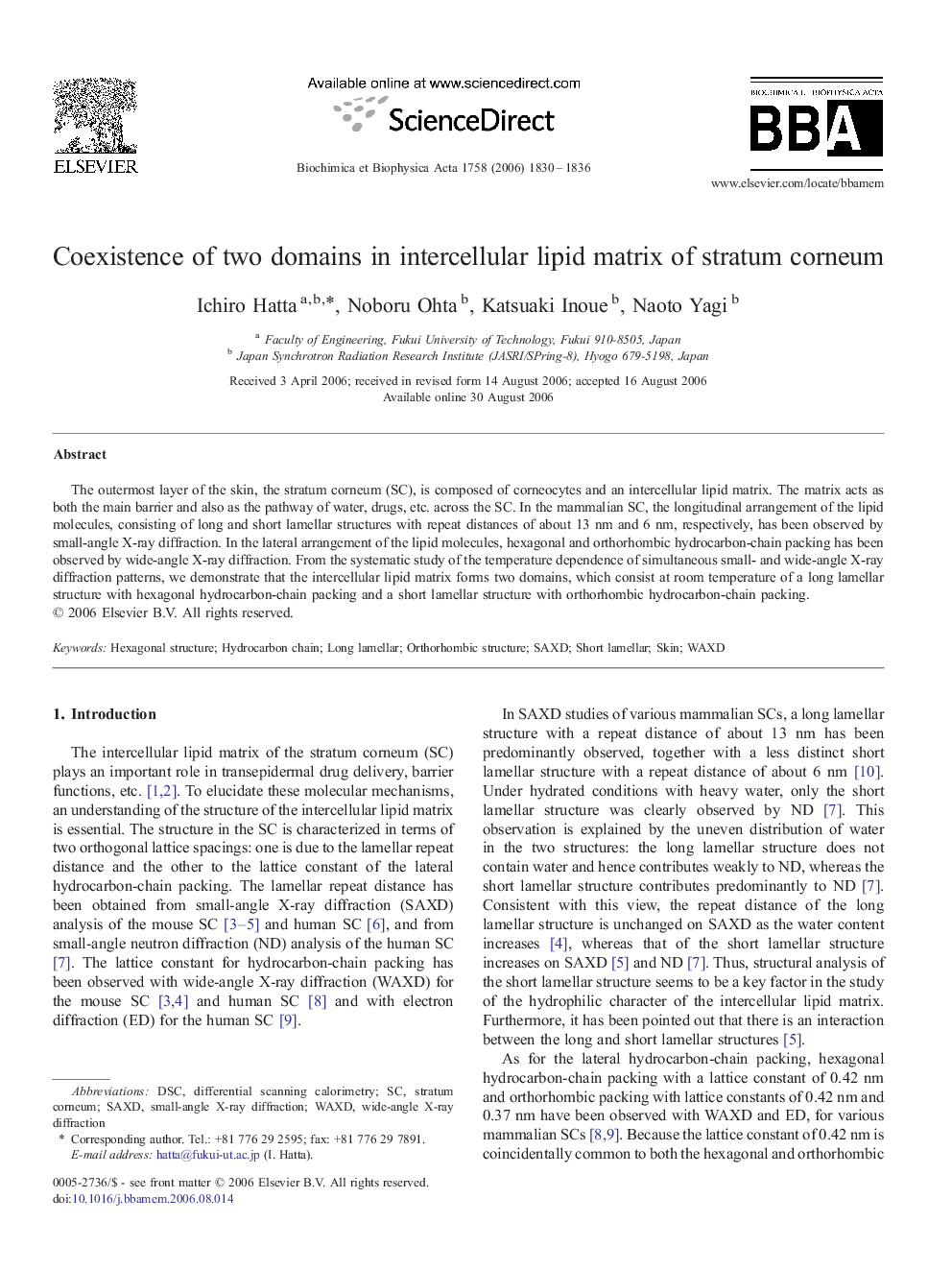| Article ID | Journal | Published Year | Pages | File Type |
|---|---|---|---|---|
| 1945981 | Biochimica et Biophysica Acta (BBA) - Biomembranes | 2006 | 7 Pages |
The outermost layer of the skin, the stratum corneum (SC), is composed of corneocytes and an intercellular lipid matrix. The matrix acts as both the main barrier and also as the pathway of water, drugs, etc. across the SC. In the mammalian SC, the longitudinal arrangement of the lipid molecules, consisting of long and short lamellar structures with repeat distances of about 13 nm and 6 nm, respectively, has been observed by small-angle X-ray diffraction. In the lateral arrangement of the lipid molecules, hexagonal and orthorhombic hydrocarbon-chain packing has been observed by wide-angle X-ray diffraction. From the systematic study of the temperature dependence of simultaneous small- and wide-angle X-ray diffraction patterns, we demonstrate that the intercellular lipid matrix forms two domains, which consist at room temperature of a long lamellar structure with hexagonal hydrocarbon-chain packing and a short lamellar structure with orthorhombic hydrocarbon-chain packing.
